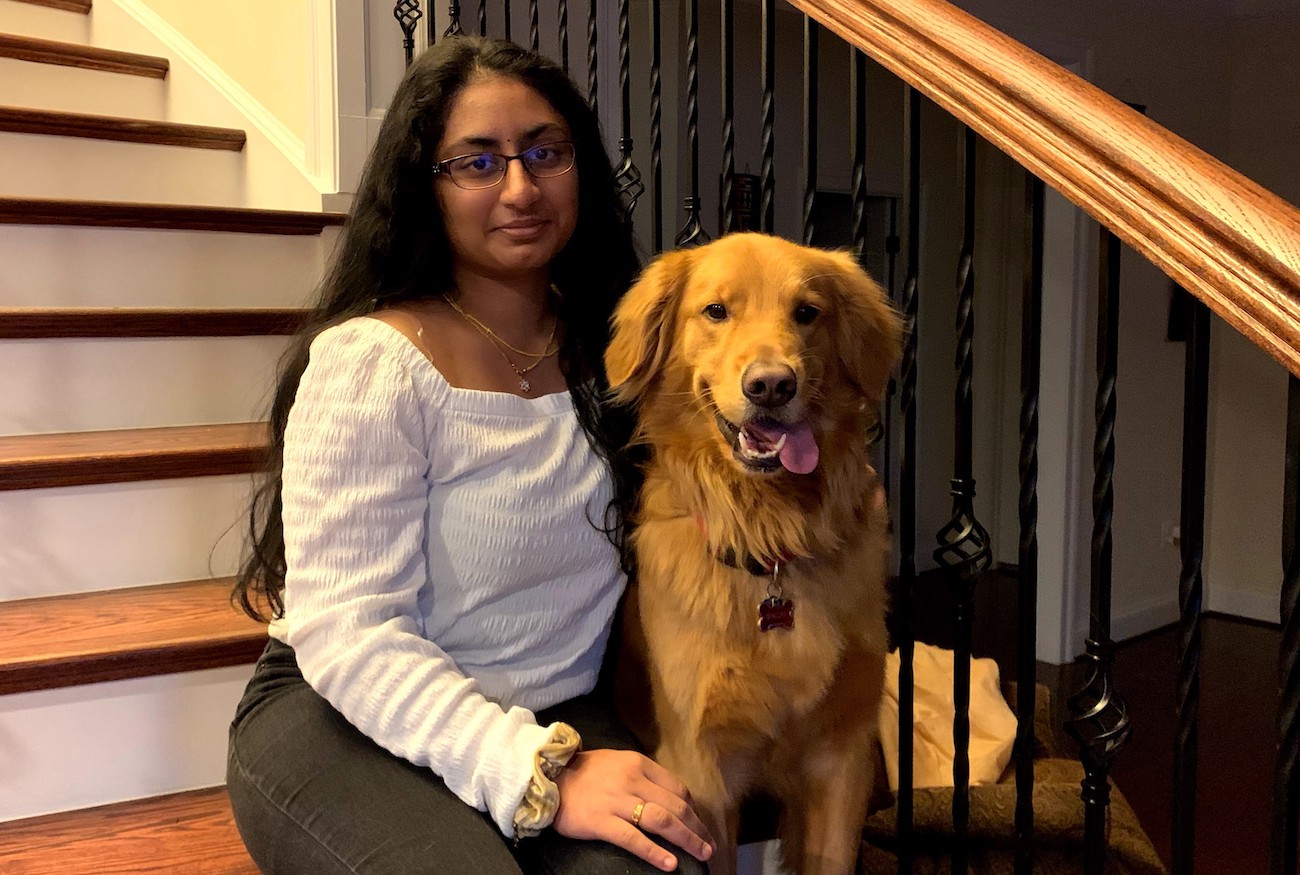How Virginia Teen Prasidha Padmanabhan is Raising the Profile of Women of Color in School Curriculum
- Through her nonprofit WEAR, the 16-year-old Indian American and her board members are working with elementary and middle schools in Fairfax County to bring about change.

During the height of the COVID-19 pandemic, 16-year-old Prasidha Padmanabhan saw a tweet about repealing the 19th Amendment, which granted women the right to vote. The fact that people were “still questioning and debating the basic right of a woman’s ability to vote,” bothered her. She realized there was a problem with people’s understanding of how important women are and how much they contribute to society. And when she began reflecting on these points, she began to understand that throughout her education she has been confused about women’s place in history. She thought that “going at it from an educational perspective would be helpful and impactful for generations of students.”
So in the summer of 2020, Padmanabhan, currently a junior at Thomas Jefferson High School for Science and Technology in Fairfax County, Virginia, launched Women for Education, Advocacy and Rights (WEAR). “I created WEAR to try and combat gender inequality through increasing the representation of diverse women’s history in our curriculum in history education,” she told American Kahani.
“I wanted to ensure that students didn’t have an experience where they are in school and they question the importance of women and women’s history.” She wants kids from a young age to be taught about all the women, “especially women of color who have done everything in American history and world history.” And to bring about that change, WEAR is currently working with elementary and middle schools in Fairfax County.

Although women’s history is “touched upon a lot more” in high school, Padmanabhan says it’s “still very minutely mentioned and not at all at the depth that it should be.” She also sees a wider scope for WEAR, state-wide and nationally as well. “My goal is to make it a standard across schools in the country that we learn nationally about women.”
According to The Washington Post, one of WEAR’s first actions was to create a petition “calling on Fairfax Schools to integrate women’s history into elementary and middle school curriculum.” The petition drew more than 5,000 signatures, the Post said.
Padmanabhan believes that when kids go through school and only see one type of person — usually a white male — “they never really learn that there are other perspectives and other people throughout history who have contributed just as much.”
At WEAR, Padmanabhan is joined by seven other Fairfax County Public School students on the executive board. All of them are Asian American and female, save one male. The organization works on diversifying the history curriculum through various initiatives like webinars and on social media to spread awareness about women’s issues and rights.
WEAR has been in contact with people from the local and state governments and has had meetings with some officials. She hopes that Gov. Glenn Youngkin’s administration will have “a similar way of thinking” and that “teaching of diverse women’s history is encouraged.”
She believes the inclusion of women’s history in elementary and middle schools has a lot of advantages. Combating sexism, which is “deep-rooted in our society,” is the most important one. Noting that sexism is “a learned behavior,” Padmanabhan believes that when kids go through school and only see one type of person — usually a white male — “they never really learn that there are other perspectives and other people throughout history who have contributed just as much.” And they end up learning “a very unequal version of history,” she notes. “If they are taught equally about women’s history, they’ll be more informed and educated people and they will definitely have much less susceptibility to narratives that women contributed less and less susceptibility to being sexist and following into those patterns of thinking.”
Initially, Padmanabhan faced backlash. People were hesitant toward the initiative and thought there was no purpose. “A lot of people also questioned the need to teach women’s history and why it was important,” she recalls. And this further cemented Padmanabhan’s resolve because the resistance and questions proved that people aren’t aware of the women who made a difference. After all, people have little knowledge about it and think it to be trivial.
Similarly, she draws inspiration from the pushback and scrutinization she receives as a young woman of color. She has noticed the different ways in which people react to her versus a male counterpart or a white counterpart and that’s made an impact on how she’s gone about executing her organization. “It was motivating.”
She envisions herself continuing to run WEAR even as she goes to college to eventually pursue her passion of a career in law “to fight for other people’s rights and give them a voice,” which has been amplified by starting WEAR. “The work of advocacy and outreach has begun with elementary and middle school curriculums but eventually, high school curriculum needs to be amended as well as college-level classes,” she says. “There’s room in improving all history education and all education.”



